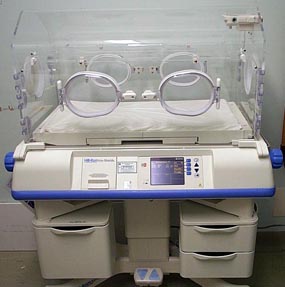How do Incubators Work
Why do some newborn infants need these protective chambers and what do they do?
Humans are homeothermic – in other words, we’re capable of regulating our own body temperature within a certain range. So too are newborn babies but to a lesser extent. However, some infants -usually those born prematurely – are only able to maintain their body temperature within a very small thermal window.
They have poor heat insulation, a relatively large surface area and a small mass, making it very difficult for them to maintain their core body temperature. A small increase/decrease either side of the ideal can be catastrophic if left unchecked.
The primary task of a neonatal incubator is to maintain an even temperature within an enclosed unit that’s designed to eliminate small eddies that can interfere with overall thermo-neutrality.
 This is achieved with a bespoke heater and fan, plus a container for water to add humidity to the air and avoid dehydrating the baby. At less than 31 weeks old, premature infants haven’t undergone the keratinisation process necessary to protect their skin from drying out, making dehydration and heat loss through evaporation a real danger.
This is achieved with a bespoke heater and fan, plus a container for water to add humidity to the air and avoid dehydrating the baby. At less than 31 weeks old, premature infants haven’t undergone the keratinisation process necessary to protect their skin from drying out, making dehydration and heat loss through evaporation a real danger.
Modern, hi-tech incubators will include a servo-control that will regulate the incubator air temperature using a thermistor, a type of resistor whose resistance varies according to heat; this is attached to the baby’s abdomen to monitor body heat. For severely premature neonates (newborns) oxygen may also need to be administered via a nasal cannula tube linked to a control valve within the incubator enclosure.
Read also on other blogs Baby Incubation, NeoNurture: the “Car Parts” Incubator, Infant Electric Incubator
